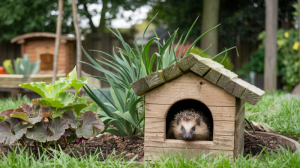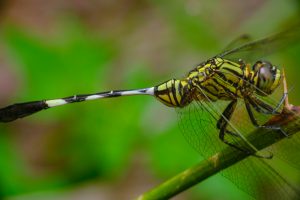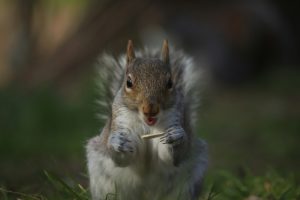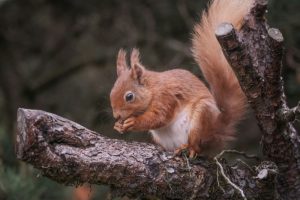- The Lifespan of Osteoclasts: How Long Do They Live?
- What is Monkfish average lifespan?
- What is Amberjack average lifespan?
- What is Sturgeon average lifespan?
- What is Barramundi average lifespan?
- What is Wahoo average lifespan?
- What is Shark average lifespan?
- What is Redfish average lifespan?
- What is Marlin average lifespan?
- What is Pompano average lifespan?
- What is Rainbow Trout average lifespan?
- What is Swordfish average lifespan?
- What is Anchovy average lifespan?
- What is Grouper average lifespan?
- What is Halibut average lifespan?
- What is Carp average lifespan?
- What is Pike average lifespan?
- What is Flounder average lifespan?
- What is Tilapia average lifespan?
- What is Sardine average lifespan?
British Frogs and Toads: Species, Habitats, and Lifespan
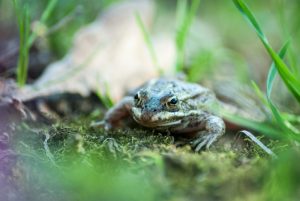
The amphibians native to the British Isles, often referred to as frogs and toads in the UK, play a vital role in maintaining healthy ecosystems. These fascinating creatures act as both predator and prey, controlling insect populations and providing a food source for birds, fish, and mammals. Let’s explore the different species, their habitats, and how long they typically live.
Who Do the British Call Frogs
In everyday conversation, most Britons simply refer to all frogs and toads as “frogs.” However, some regional terms exist for specific species, like the “warty bowler” nickname for the common toad in some parts of England.

British Frog Species
There are two native frog species found in the UK:
| British Frog Species | Description |
|---|---|
| Common Frog (Rana temporaria) | This widespread amphibian is the most familiar British frog. Commonly found in ponds, marshes, and even gardens, it’s typically brown or green with a lighter underside and a dark stripe down its back. Agile swimmers, common frogs can jump impressive distances and are known for their loud croaking, particularly during the breeding season. |
| Pool Frog (Pelophylax lessonae) | This recently reintroduced species is much rarer than the common frog. Larger and stockier, pool frogs have smoother skin and prefer deeper water habitats like lakes and large ponds. |
British Toad Species
The UK is home to two native toad species:
| British Toad Species | Description |
|---|---|
| Common Toad (Bufo bufo) | This stocky amphibian, typically brown or grey with warty skin, is a familiar sight in gardens and woodlands. Unlike frogs, common toads spend most of their time on land, only entering water to breed. They are nocturnal hunters, using their sticky tongues to catch insects. |
| Natterjack Toad (Epidalea calamita) | Smaller and less common than the common toad, the natterjack toad is easily identified by the yellow stripe running down its back. Found primarily in coastal areas with sand dunes and heath lands, they are known for their distinctive high-pitched “churring” call. |
While both frogs and toads are beneficial predators, toads tend to be more terrestrial, spending less time in the water and focusing on controlling garden pests like slugs and snails.
Habitats of British Frogs and Toads
UK wetlands, including marshes, ponds, and lakes, are prime habitats for frogs and toads. These areas provide the amphibians with the water they need to breed and lay eggs, as well as a plentiful supply of insects for food.
However, frogs and toads can also be found in a variety of other habitats, including woodlands, grasslands, and even some garden ponds. The key factor is the presence of moisture and a good supply of prey.
Behavior and Communication
One of the most recognizable features of frogs is their vocalizations. But do British frogs croak? The answer is yes! The Common Frog makes a gentle croaking sound, particularly during the breeding season. Males use these calls to attract females to the water. On the other hand, the Natterjack Toad has a much louder and more distinctive call, which can be heard over long distances, especially in sandy areas where they breed.
The calls of British frogs and toads are not as loud or frequent as those of tropical species, but they play a crucial role in their life cycle and reproductive success.

Lifespan and Life Cycle of British Frogs
How long do British frogs live? The lifespan of British frogs can vary depending on environmental conditions. The Common Frog typically lives for 5 to 10 years in the wild, though some individuals have been known to reach 12 years. Frogs that avoid predators and harsh environmental conditions tend to live longer.
The life cycle of frogs and toads follows a similar pattern:
- Eggs: Females lay clumps of jelly-like eggs (spawn) in ponds.
- Tadpoles: The eggs hatch into tadpoles, which are fully aquatic and feed on algae.
- Metamorphosis: Over a period of weeks, tadpoles develop legs and lungs, eventually leaving the water as juvenile frogs or toads.
- Adult Stage: The adults return to the water each spring to breed.
Toads generally live longer than frogs, with the Common Toad sometimes reaching 10–15 years in age.
Conservation and Challenges
Frogs and toads face several challenges in the UK, primarily due to habitat loss. Urbanization, pollution, and changes in land use have led to a decline in wetland areas, which are critical for their survival. Climate change is another factor, with milder winters disrupting hibernation cycles.
Conservation efforts are underway, particularly to protect rare species like the Pool Frog and Natterjack Toad. Wetland restoration and the creation of garden ponds can help ensure that these amphibians continue to thrive in the British Isles.

British frogs and toads are an integral part of the UK’s wildlife, offering a glimpse into the health of local ecosystems. From the common sight of the Common Frog in gardens to the unique calls of the Natterjack Toad, these amphibians enrich the natural world around us. By understanding their habitats, behavior, and lifespan, we can better appreciate these fascinating creatures and take steps to protect them for future generations.
